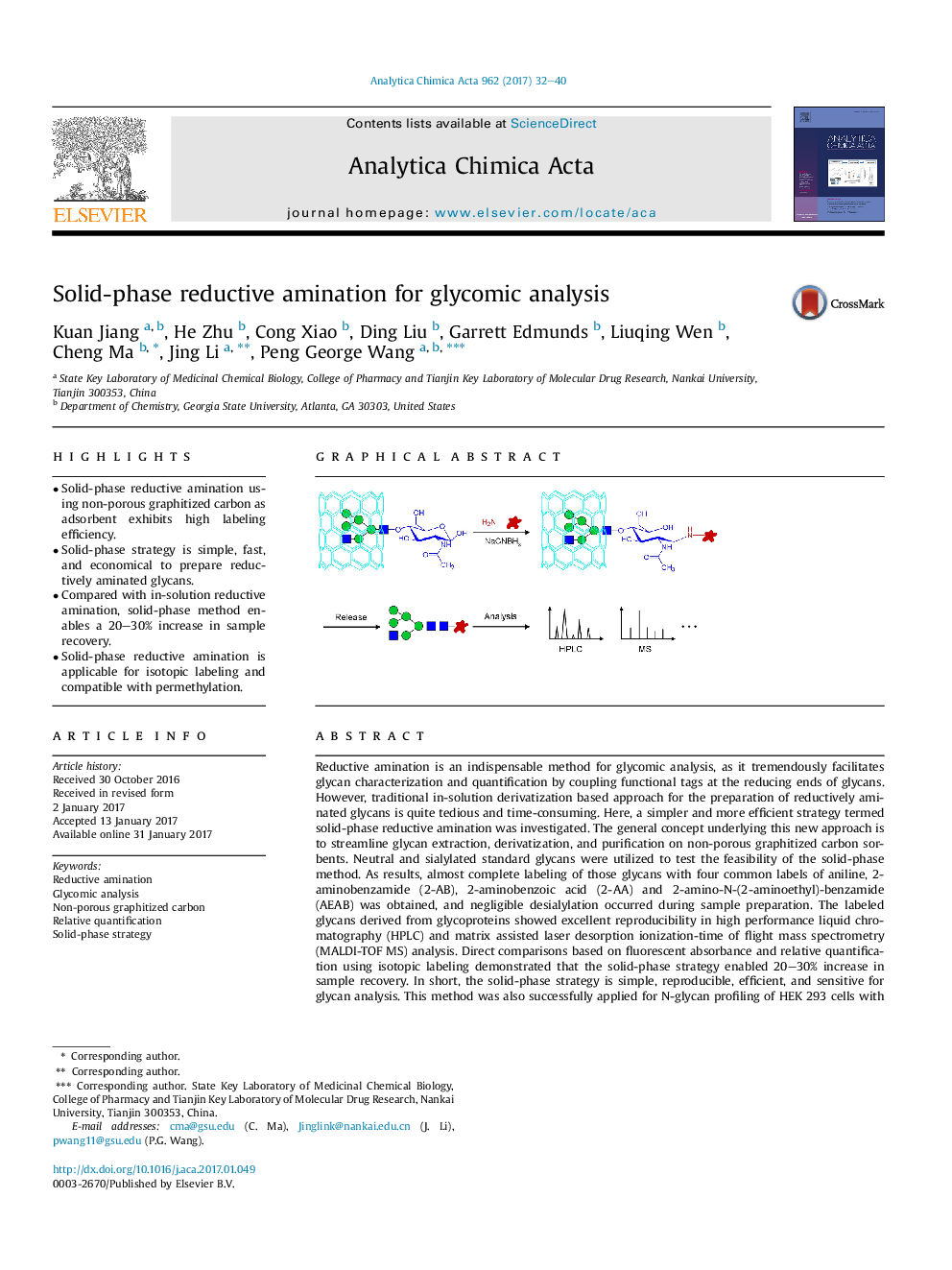| کد مقاله | کد نشریه | سال انتشار | مقاله انگلیسی | نسخه تمام متن |
|---|---|---|---|---|
| 5130953 | 1490870 | 2017 | 9 صفحه PDF | دانلود رایگان |

- Solid-phase reductive amination using non-porous graphitized carbon as adsorbent exhibits high labeling efficiency.
- Solid-phase strategy is simple, fast, and economical to prepare reductively aminated glycans.
- Compared with in-solution reductive amination, solid-phase method enables a 20-30% increase in sample recovery.
- Solid-phase reductive amination is applicable for isotopic labeling and compatible with permethylation.
Reductive amination is an indispensable method for glycomic analysis, as it tremendously facilitates glycan characterization and quantification by coupling functional tags at the reducing ends of glycans. However, traditional in-solution derivatization based approach for the preparation of reductively aminated glycans is quite tedious and time-consuming. Here, a simpler and more efficient strategy termed solid-phase reductive amination was investigated. The general concept underlying this new approach is to streamline glycan extraction, derivatization, and purification on non-porous graphitized carbon sorbents. Neutral and sialylated standard glycans were utilized to test the feasibility of the solid-phase method. As results, almost complete labeling of those glycans with four common labels of aniline, 2-aminobenzamide (2-AB), 2-aminobenzoic acid (2-AA) and 2-amino-N-(2-aminoethyl)-benzamide (AEAB) was obtained, and negligible desialylation occurred during sample preparation. The labeled glycans derived from glycoproteins showed excellent reproducibility in high performance liquid chromatography (HPLC) and matrix assisted laser desorption ionization-time of flight mass spectrometry (MALDI-TOF MS) analysis. Direct comparisons based on fluorescent absorbance and relative quantification using isotopic labeling demonstrated that the solid-phase strategy enabled 20-30% increase in sample recovery. In short, the solid-phase strategy is simple, reproducible, efficient, and sensitive for glycan analysis. This method was also successfully applied for N-glycan profiling of HEK 293Â cells with MALDI-TOF MS, showing its attractive application in the high-throughput analysis of mammalian glycome.
296
Journal: Analytica Chimica Acta - Volume 962, 15 April 2017, Pages 32-40